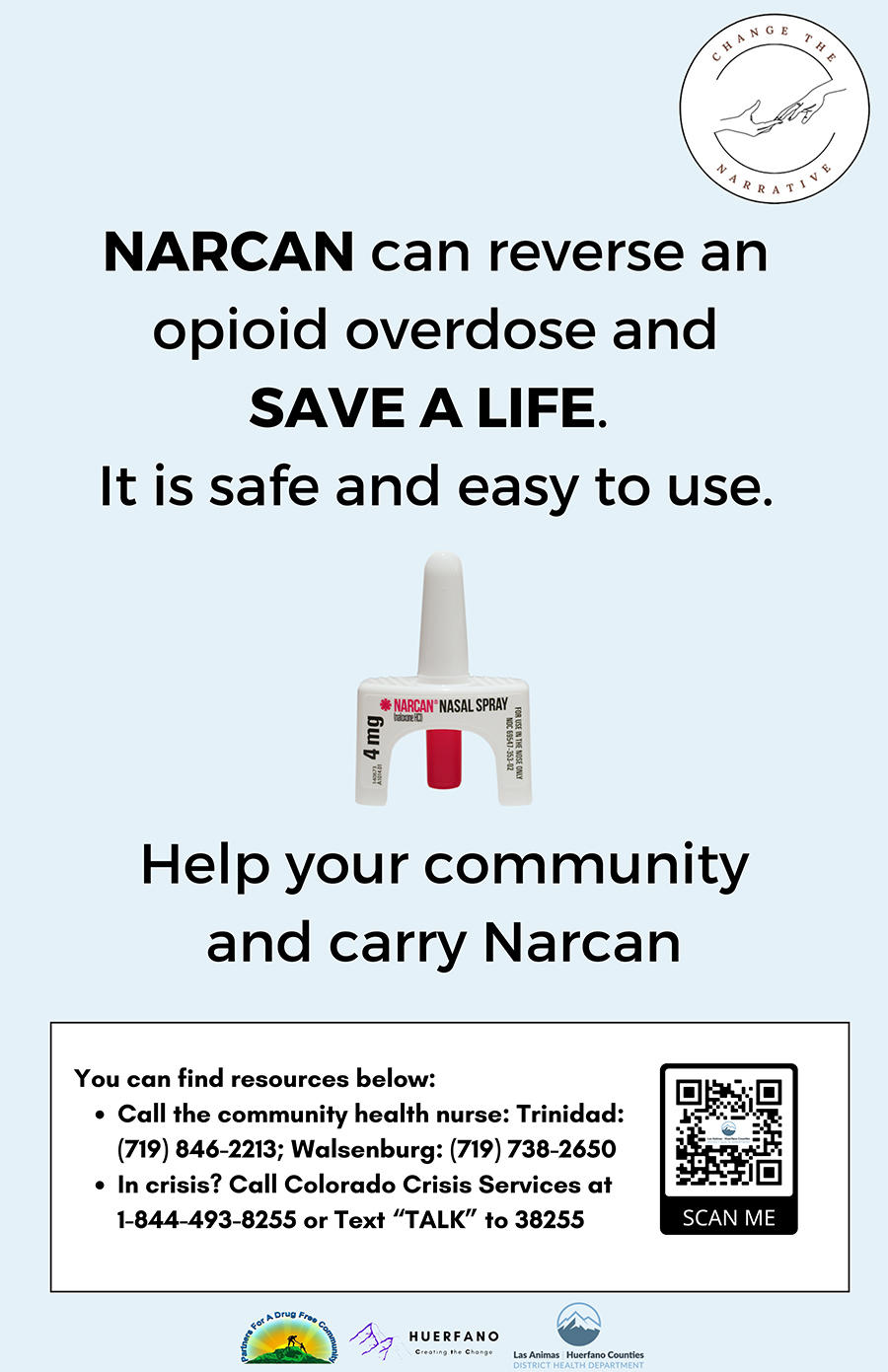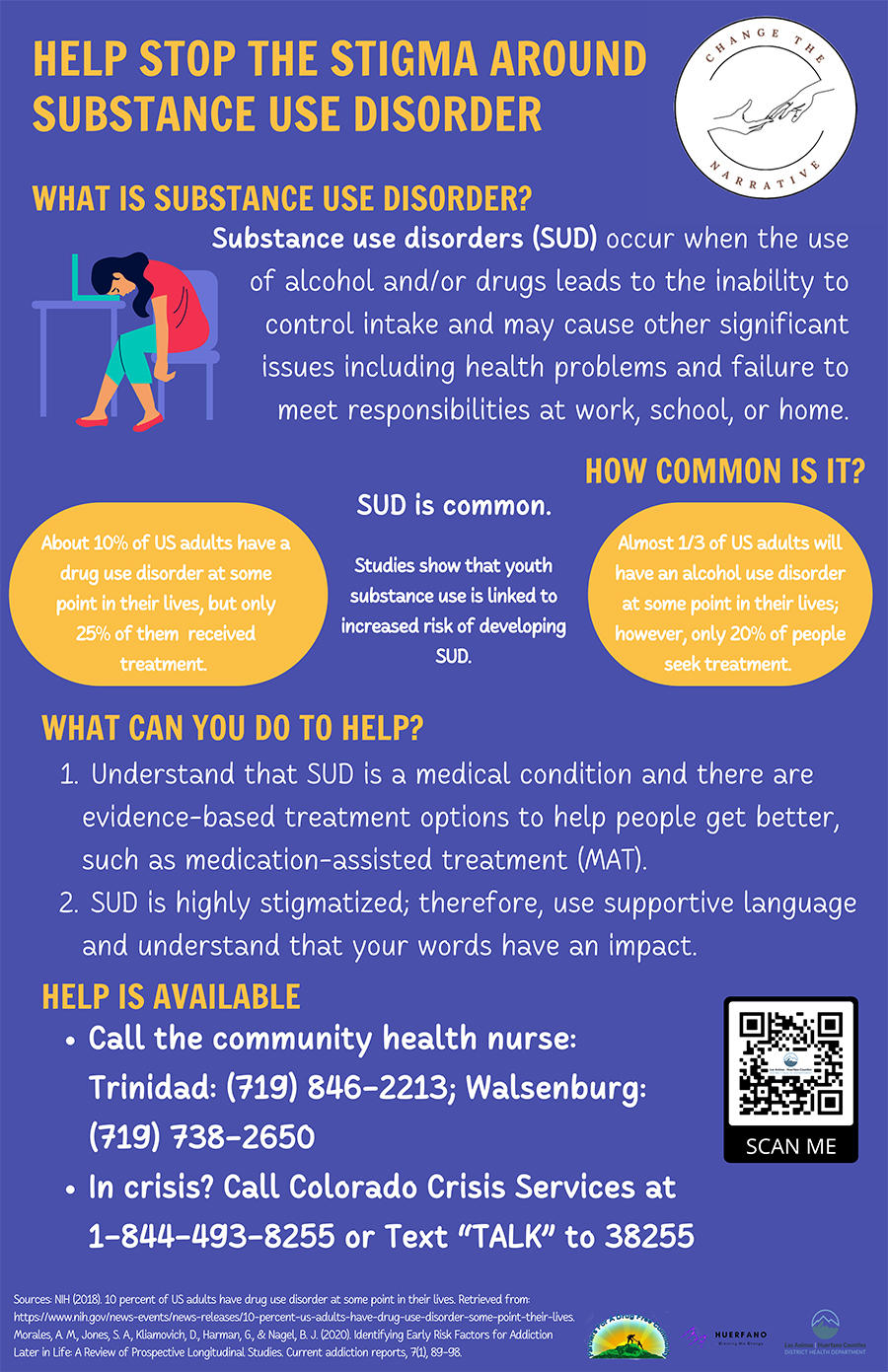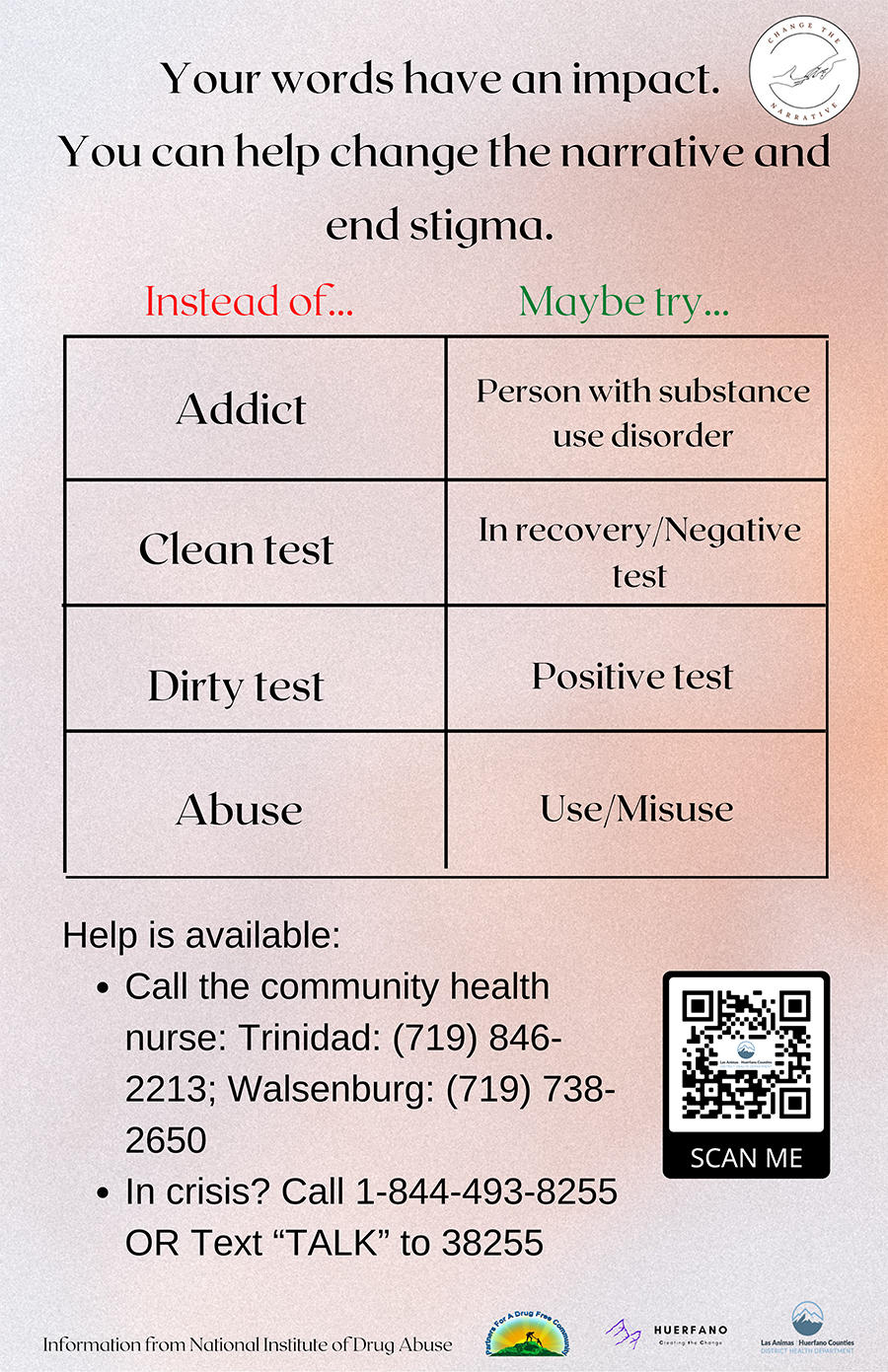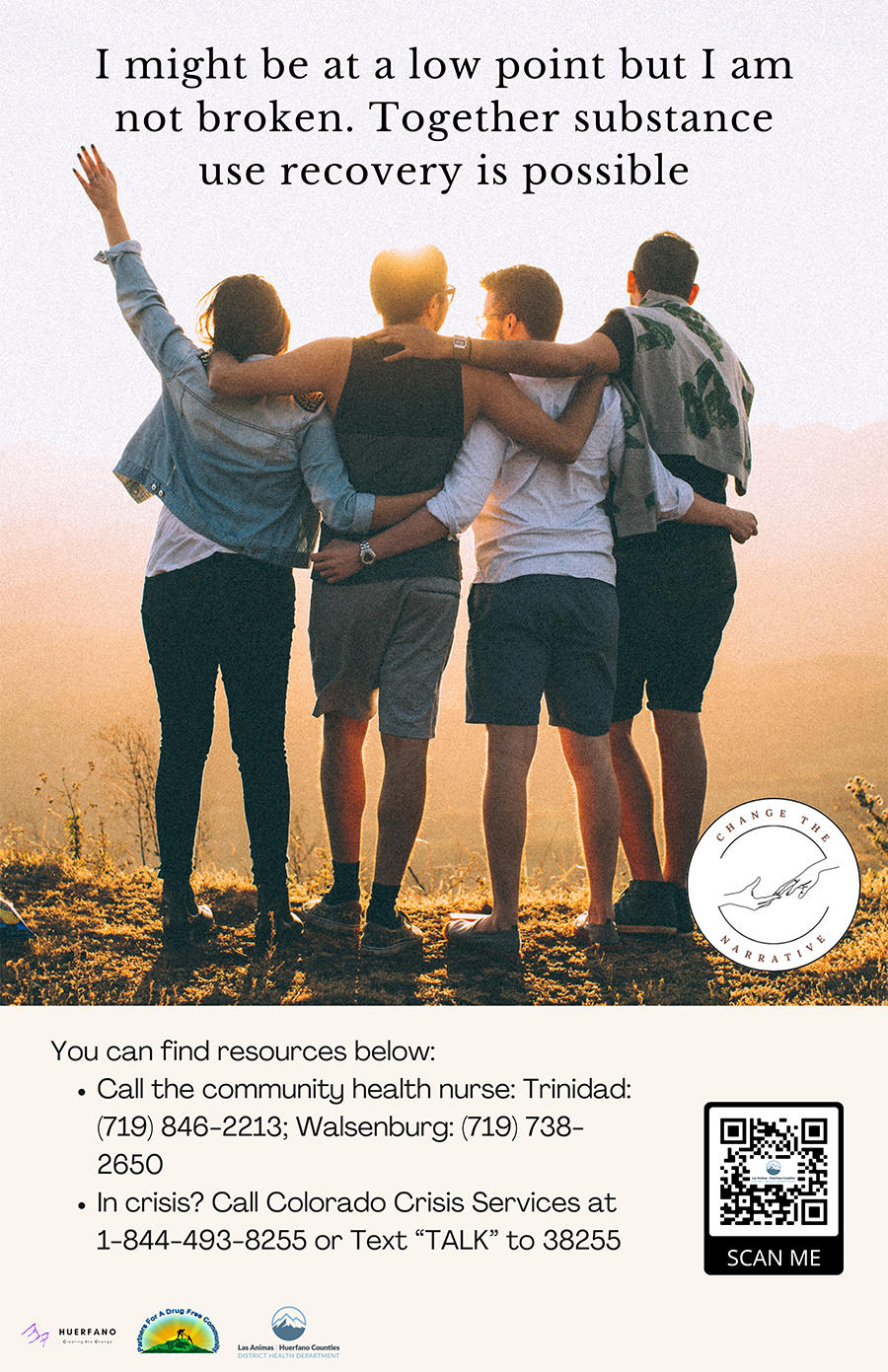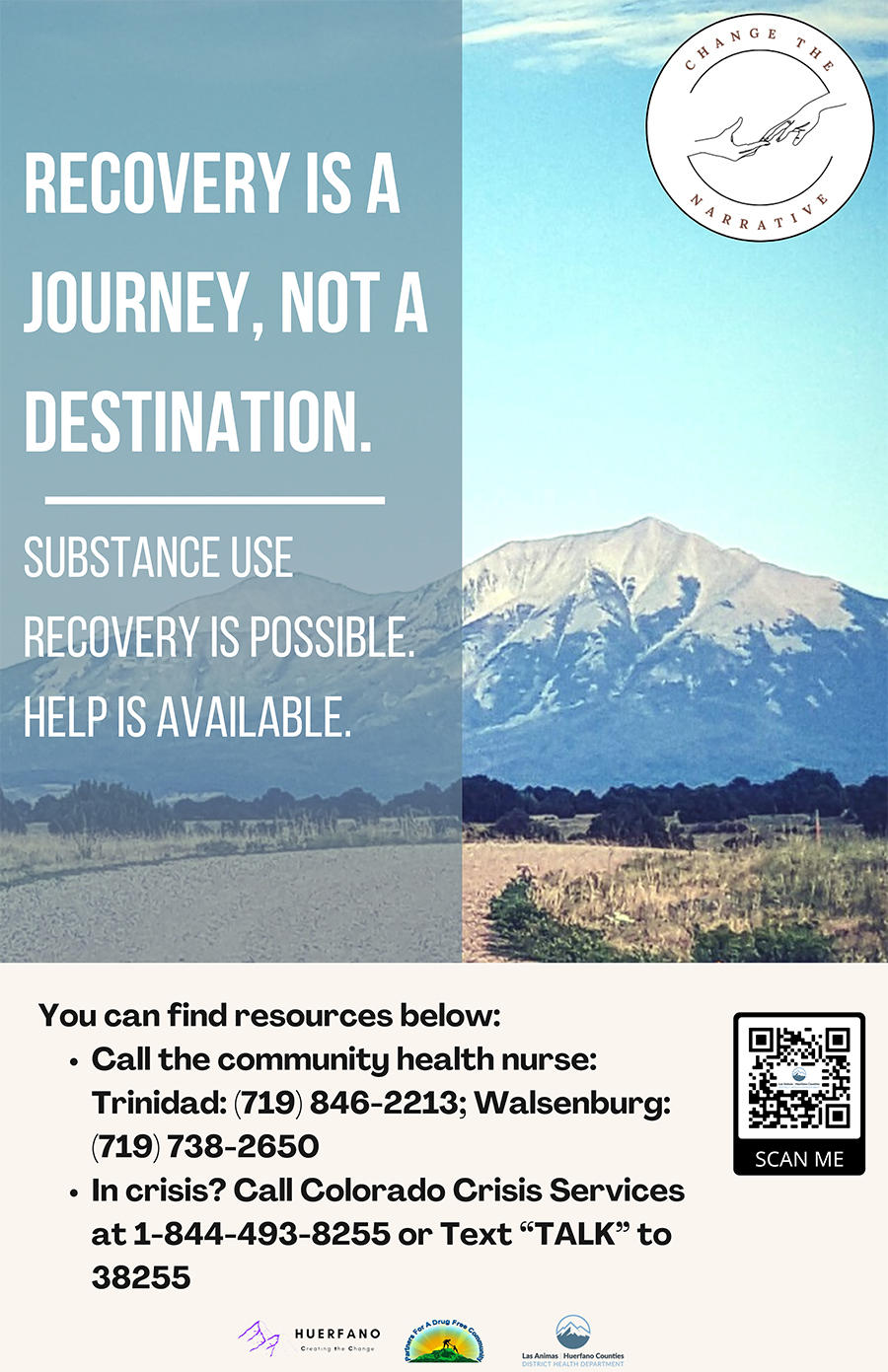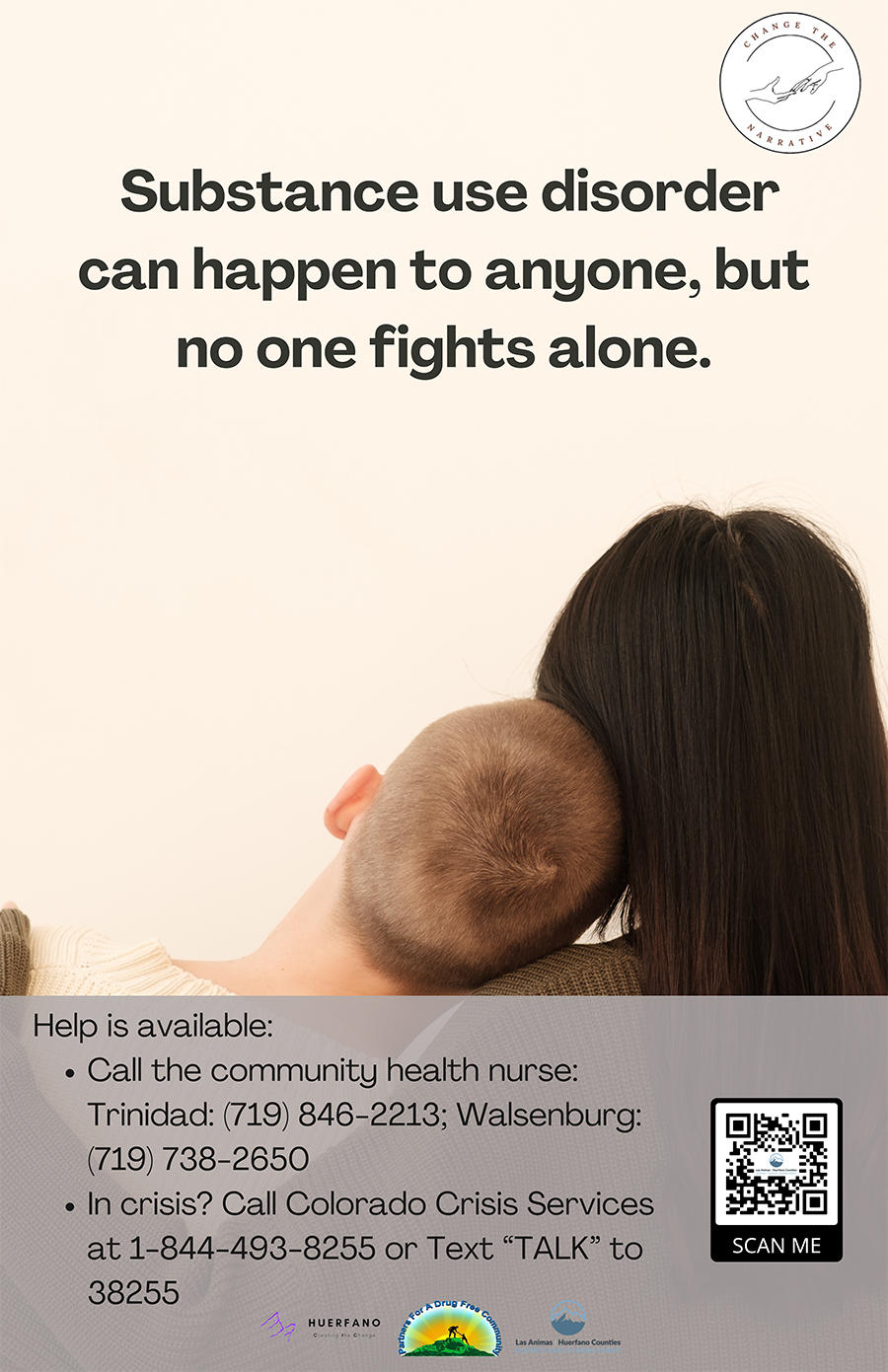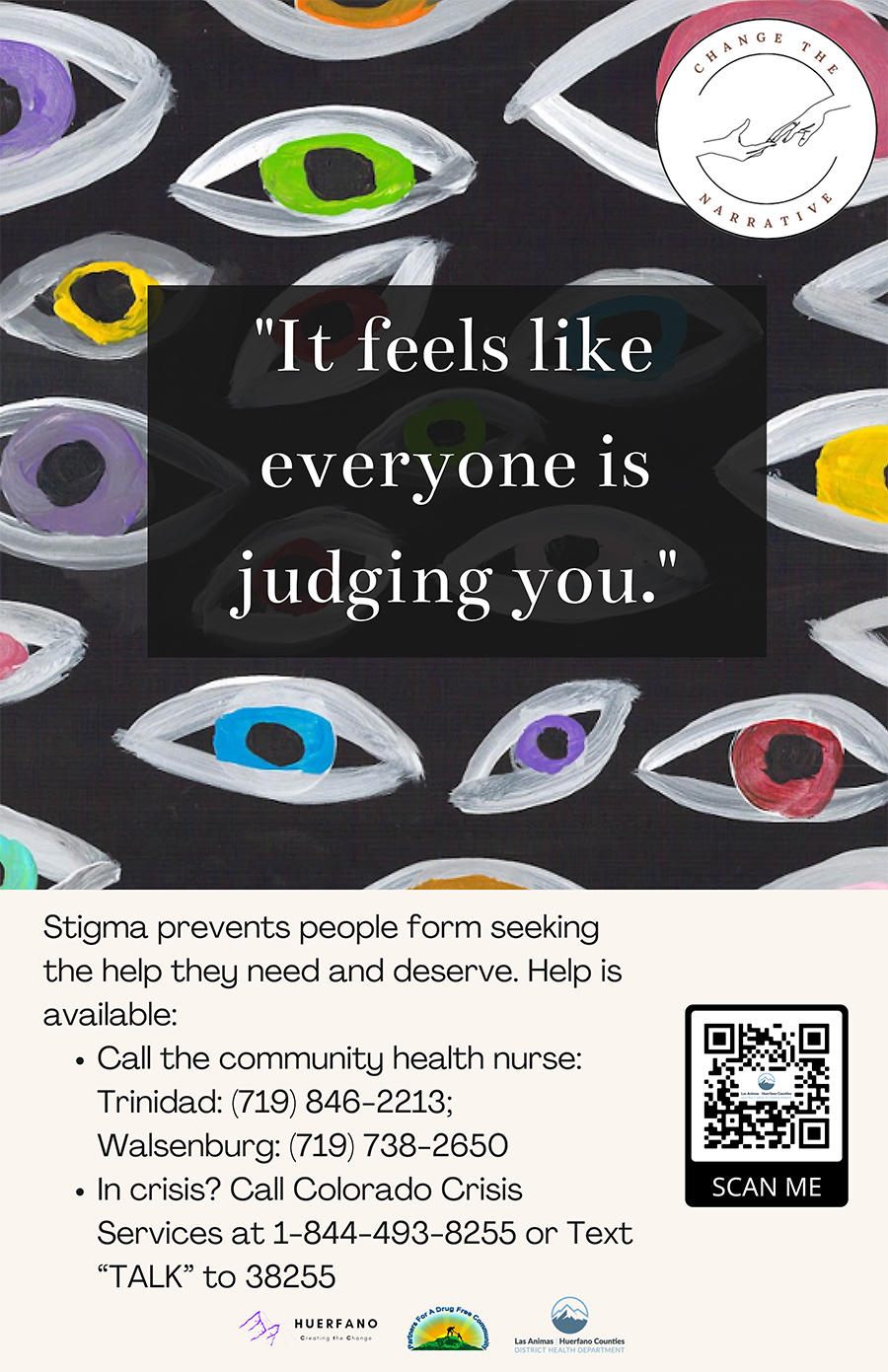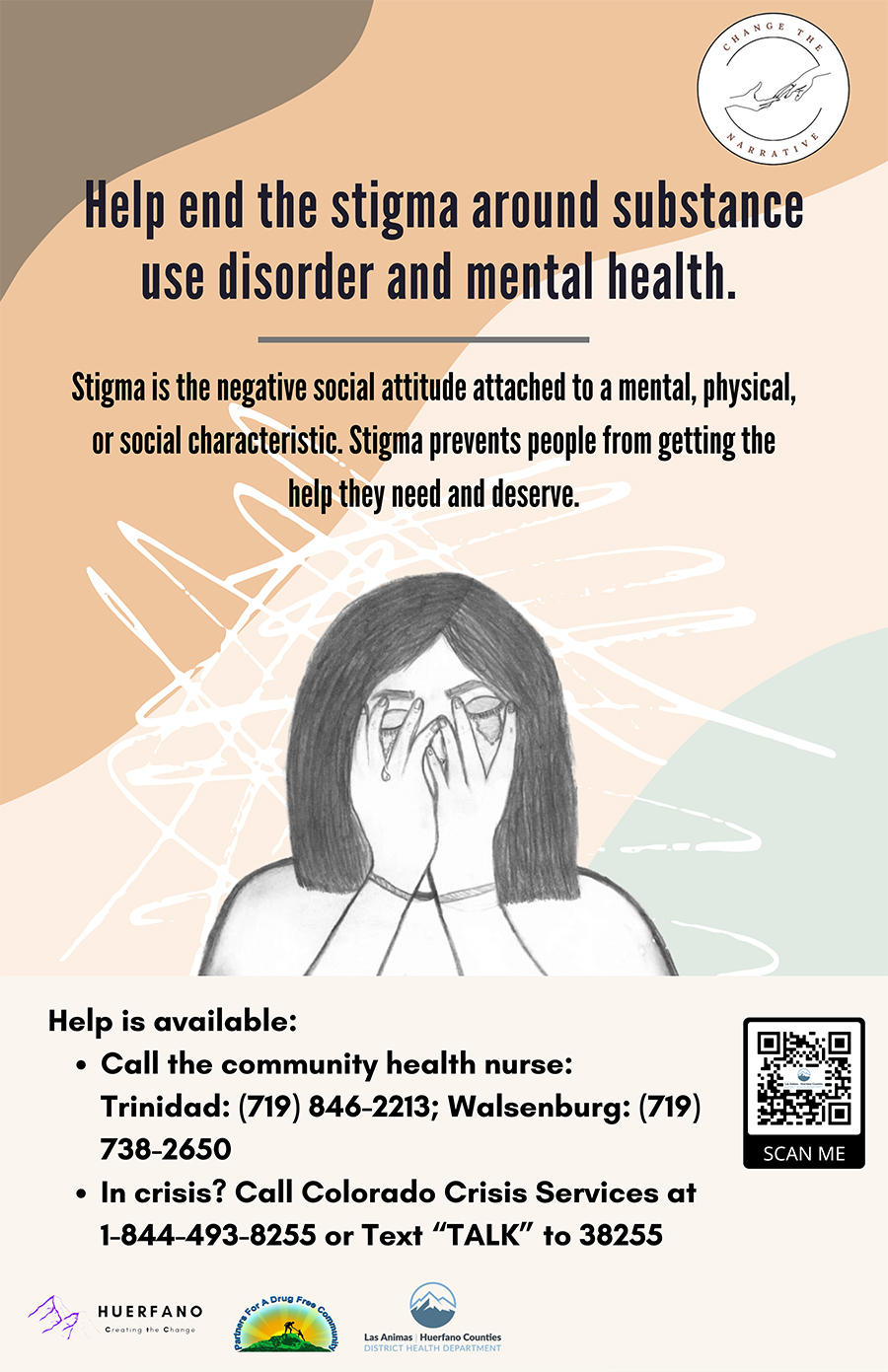The "Change the Narrative" campaign was created by leaders in our community to bring awareness to the topic of stigma around substance use disorder and reduce stigma in our community. Feel free to share any of the resources at the bottom of this page.
Why are we trying to reduce stigma around substance use disorders?
Stigma affects people with substance use disorder and mental health issues in the following ways:
- Stigma prevents people from getting the help they need. The potential social, legal, and employment effects of disclosing a substance use disorder can make people feel stigmatized and less likely to seek help.
- Stigma isolates individuals who are struggling. Stigmatizing views and stereotypes can make others feel pity, fear, anger, and disgust towards people with a substance use disorder and may even lead to avoidance or social distancing.
- Stigma negatively impacts healthcare. Stigmatizing language can impact the healthcare people with substance use disorder by influencing provider perceptions, potentially leading to bias.
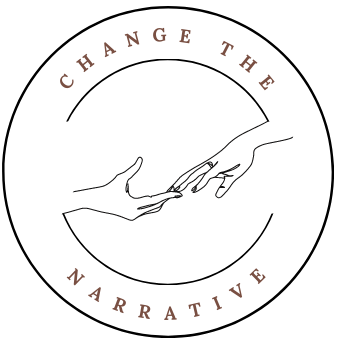
The evidence suggests that using language showing compassion and care for individuals, families, and communities impacted by substance use disorder can help reduce stigma. Consider using person-first language like "person with a substance use disorder" instead of "addict." Read more about how your words matter.
What can you do to help reduce the stigma around substance use disorders?
- Understand that SUD is a medical condition and that there are evidence-based treatment options to help people get better.
- Know what help is available in your community for yourself or a loved one:
- Call the community health nurse: Trinidad: (719) 846-2213; Walsenburg: (719) 738-2650
- In crisis? Call Colorado Crisis Services at 1-844-493-8255 or Text "TALK" to 38255
- Substance use disorder (SUD) is highly stigmatized; therefore, use supportive language and educate yourselves and others on the negative impacts of stigma.
- Read more about substance use disorder, treatment, and prevention by visiting some of the following links:
- For substance use and stigma:
- For treatment and recovery:
- Learn how you can carry Narcan, a medication to reverse an opioid overdose, and save a life: Free Naloxone Education
Recovery is possible.
From the Substance Abuse and Mental Health Services Administration (SAMHSA) website:
SAMHSA defines recovery as a process of change through which individuals improve their health and wellness, live self-directed lives, and strive to reach their full potential. Hope and resiliency are essential to recovery. Recovery is characterized by continual growth and improvement in one’s health and wellness and managing setbacks. Because setbacks are a natural part of life, resilience becomes a key component of recovery.
The Four Major Dimensions of Recovery:
- Health: overcoming or managing one’s disease(s) or symptoms, and making informed, healthy choices that support physical and emotional well-being
- Home: having a stable and safe place to live
- Purpose: conducting meaningful daily activities, such as a job, school volunteerism, family caretaking, or creative endeavors, and the independence, income, and resources to participate in society
- Community: having relationships and social networks that provide support, friendship, love, and hope
Our community thrives when you thrive. Reducing stigma around substance use disorder and providing a place of support for individuals to seek the help they deserve is a community-wide effort. We need you to be a part of changing the narrative around substance use disorder!

